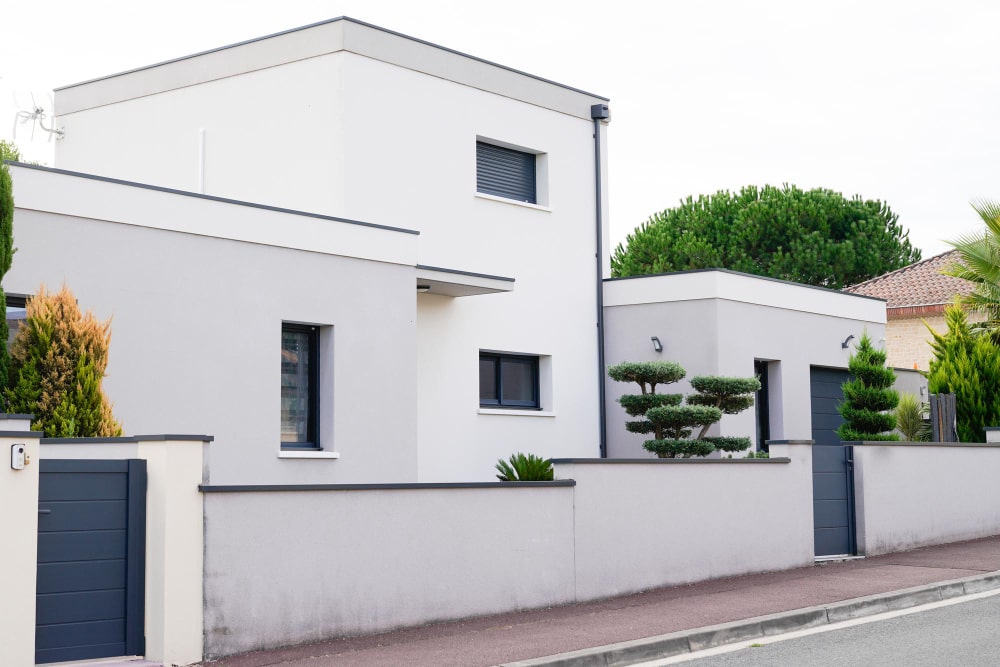Imagine a home that subtly transforms its exterior hues as the seasons shift—warming up with richer tones in the winter and cooling down to paler shades in the summer. This futuristic vision might soon become a reality thanks to advancements in climate-responsive materials, particularly a new kind of paint engineered to react to changes in temperature.
Este concepto innovador de pintura trasciende los pigmentos que cambian de color de manera tradicional. A diferencia de las pinturas novedosas que reaccionan momentáneamente al calor o la luz solar con fines decorativos, los recubrimientos adaptativos al clima se están desarrollando pensando en la funcionalidad. El objetivo es ajustarse de manera pasiva a las condiciones del entorno de formas que puedan disminuir el consumo energético, mejorar el atractivo visual y fomentar un estilo de vida sostenible.
At the heart of the technology is a material science breakthrough. Researchers are exploring thermochromic compounds—substances that change color when exposed to specific temperatures—and integrating them into durable, weather-resistant coatings. These materials have long been used in products like mood rings or novelty mugs, but adapting them for architecture requires greater stability, resistance to fading, and consistent performance over time.
The potential impact of climate-responsive paint goes beyond aesthetics. In hot climates, lighter colors reflect sunlight and help keep buildings cool, reducing the need for air conditioning. Conversely, darker tones absorb more heat, which can be advantageous in colder seasons. A building surface that adjusts its shade automatically based on the surrounding temperature could play a passive yet powerful role in moderating indoor temperatures and lowering energy demand.
This approach aligns with a broader trend in architecture and urban design: developing passive solutions to environmental challenges. Innovations such as smart glass that tints in sunlight or roofs that reflect infrared radiation are part of the same movement—one that seeks to reduce reliance on mechanical systems through smarter materials.
In practical terms, developers of these paints are focusing on making them durable enough to withstand the elements without losing their responsiveness. The paint must resist ultraviolet degradation, moisture damage, and temperature fluctuations, all while maintaining its adaptive properties for years. Engineers are also exploring how to tune the color spectrum to match seasonal preferences or specific regional needs.
Another crucial benefit of paint that responds to climate conditions is its ability to update current buildings. In contrast to major renovations or solar panel installations, the application of a new paint type is comparatively simple and economical. Should these coatings be demonstrated as scalable and economically feasible, they might provide an easy sustainability upgrade for residences, educational institutions, workplaces, and public edifices.
Beyond energy efficiency, adaptive paint can also serve an expressive or cultural function. Color has deep psychological and symbolic resonance, and buildings that shift with the environment might reflect the rhythms of nature or evoke a stronger connection to place. For example, a structure that brightens with spring’s arrival and darkens in autumn might mirror the natural world more closely, enhancing the lived experience of its occupants.
Of course, there are challenges to overcome. Manufacturing thermochromic paints at scale with consistent quality remains complex. Ensuring long-term stability in varying weather conditions, especially in regions with extreme climates, is another hurdle. There’s also the question of safety—some compounds used in early thermochromic materials were not ideal for long-term human exposure or environmental contact, so modern versions must meet rigorous health and ecological standards.
Still, interest in this area is growing. Architects, material scientists, and environmental designers are collaborating to bring this technology closer to reality. As climate change intensifies and the push for energy-efficient solutions accelerates, innovations like climate-responsive paint are gaining momentum.
This technology may also tie into smart home systems. Imagine a future where a home’s exterior adapts not just to outdoor temperatures, but also to data from internal sensors, adjusting its reflectivity or tone based on heating needs, occupancy, or even time of day. Such integration would mark a shift toward dynamic architecture that actively interacts with its environment.
Even creative expression may discover a novel medium in adaptive paint. Architectural exteriors could potentially showcase dynamic designs that transform as the day progresses, reacting to atmospheric conditions, temperature changes, or human movement. This might lead to new possibilities for city art, crafting environments that are not only aesthetically pleasing but also smart.
In the meantime, scientists persist in evaluating prototypes and exploring the boundaries of potential innovations. Although broad implementation might still be some time off, the potential for an environmentally-friendly, visually adaptable exterior coating is progressively becoming more feasible.
Whether used to reflect summer heat, warm up in winter, or simply bring buildings into closer harmony with nature’s cycles, this paint represents more than just a new color on the wall. It signals a transformation in how we think about buildings—not as static objects, but as living participants in a constantly changing environment.



